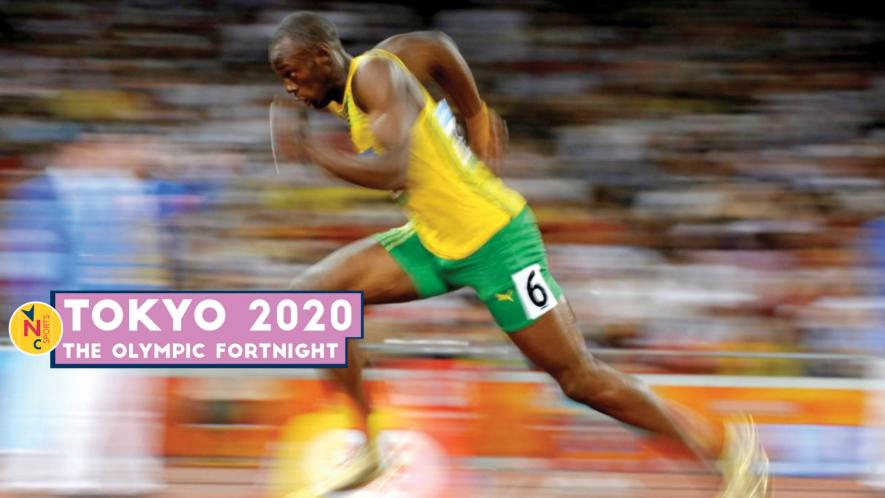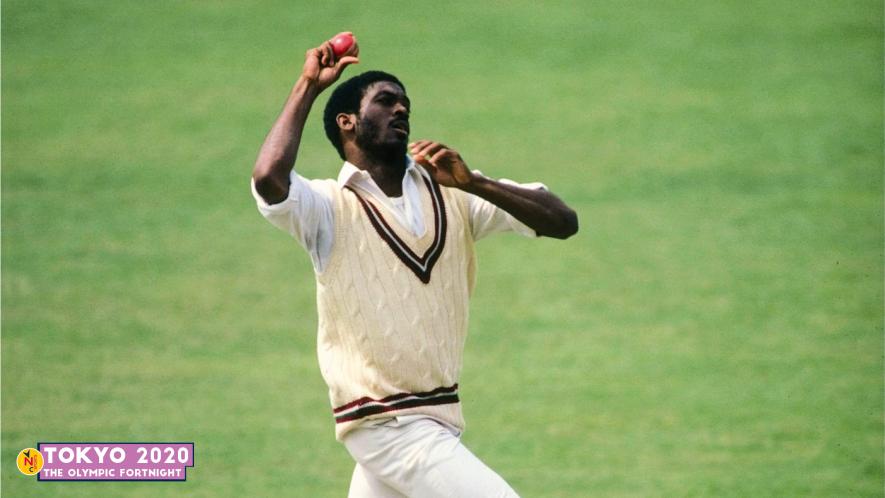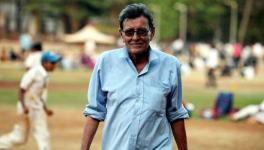Beaten Over Time: How Athletics Supplanted the West Indian Fast Bowling Tradition | Outside Edge

Jamaica falls bang in the middle of the study on genetics of speed and sprinting simply because of the phenomenon named Usain Bolt and many of his teammates. It has also produced some legendary fast bowlers, including Michael Holding (in story).
A country or region’s culture or heritage is defined by many parameters, subcultures rather. From ethnicity, music, art, poetry to religion and sport. Correction: Sport happens to be more than a subculture for it encompasses all the aspects listed above and more. It becomes over time, an identity or a calling card in itself for a region. Brazil and football. In India: Northeast and football. Haryana and wrestling comes to mind too. Fast bowling and the West Indies, err, not quite, not anymore!
The Caribbean isles struggle for pace on the cricket field now, as though the pace of life in the tropical paradise has caught up with the once formidable quicks. We have an impression of the Caribbean from the postcards — idyllic lives surrounded by the ocean, the beaches and copious amounts of serenity. When we, however, picture Jamaica — or any of the nations in the West Indies islands for that matter — beyond the cliche of island paradise, the vision that endures is speed. Both sheer, raw pace as well honed and refined momentum. Except the visual today isn’t on mud-baked 22-yard strips, but instead, on metered, laned synthetic tracks.
Is speed a cultural phenomenon? Something unique to the Caribbean and the Americas, within the Afro-American descendants of an inglorious trade of the past. Or is it genetic, science and nature at play? These are questions still being pondered upon. The answers are not quite clear yet. Within the answers to these larger questions lie an explanation for the fate of West Indies cricket, a side once known for explosive batsmen and fast — incredibly fast — sprinters throwing a leather ball with accuracy at the end of their dash.
Click | For more from ‘Tokyo 2020, The Olympic Fortnight’ series
Imagine Usain Bolt doing that. Imagine the bounce he would have extracted. Imagine the dread in the eyes of this generation of global willow-wielding superstars, spoiled by batting-friendly rules, and humoured by pacers whose biggest weapon is the slower ball. Cricket celebrates pacers with a beautiful slower delivery now. It used to be an anomaly, an oxymoron, in cricket back in the heydays of West Indian pace royalty.
Cricket is a game of glorious oxymorons in any case. And in that quagmire of eccentricities and short sightedness lies the hidden saga of the decline of the West Indian fast bowling culture. The game would do itself a huge service by unearthing it, conducting some autopsies and biopsies even, for this is not just a question of a region. On a larger plane, this is about a sport losing out to another sport. And it was no ordinary sport. Cricket, at one point, had a big say in many movements which upheld the cultural and socio-political identities of the region, and even the world, and highlighted class and race struggles via victories on the playing field. To supplant it was never easy. Or was it?
Within the islands, though, it is evident that speed’s exodus from one sport to the other came about naturally — a systematic process, an evolution more than a revolution. And the process received impetus from lack of structure and myopia on one side, and a steady stream of idols and systematic nurturing on the other.
Any culture or subculture in the Caribbean begins with colonialism. Pace too has its origins in the forced migration of humans brought about by the European colonizers. Scientists have established this via genetics and physiology. Jamaica falls bang in the middle of this study simply because of the phenomenon named Bolt and many of his teammates. Jamaica is also home to some of the quickest pacers in cricket history, preeminent among them being Michael Holding.
In his book, The Confounding Island: Jamaica and the Postcolonial Predicament, Orlando Patterson dedicated a chapter to speed and sprinters, and understandably so. The understanding of speed is a big step towards figuring out race and existential queries Jamaicans face, being a nation whose identity is obscured by a history written by the colonial masters.
Why are Jamaicans the fastest runners in the world, Patterson asks, before trying to answer the question. The author brushes aside the idea of a genetic advantage quite quickly.
Studies in physiology and genetics have provided some revealing conclusions. Athletes of African descent possess a larger percentage of what is termed as “fast twitch” fibres in their musculature. It gives them a natural edge in activities requiring quick bursts of movement. Sprinting is one. If we go through the list of the top 10 fastest athletes in human history, it has only black men from Jamaica, the US, Canada and Nigeria. The story, like anything else in life, is not as black and white as science wants us to accept though.
Also Read | Run for Your Life. Running is Life
Nigeria and Brazil — who have ethnically and thereby genetically similar populations, are not exactly powerhouses in sprinting, noted Patterson. They are good at football and other team sports while Jamaicans are not.
Patterson, in his book, tries to bring in social and systemic factors that have a say, alongside a genetic disposition to run fast. He lists, among many things, the existence of role models to follow as a big factor in establishing a sprinting culture, and thereby ensuring a production line of elite athletes.

Other variables cited include the Jamaican diet and excellent public health programmes in the country. A significant factor mentioned was the relatively low costs involved in pursuing running compared to any other sporting activity. Besides this, there are socio-anthropological phenomena such as the combative individualism found in Jamaican as well as Caribbean culture, he narrated.
However, the most pertinent point mentioned by Patterson is the system in place for athletics in the country. The annual national Inter-Scholastic Athletic Championship, popularly known as Champs, is big in the running journey of every Jamaican. Bolt’s victories in direct duels with some of his biggest rivals — compatriot Asafa Powell and American Justin Gatlin — have been attributed to his conditioning as a youngster at the Champs. The quality of the Champs is so high that some of the winners could easily be a national champion in many countries.
The competition has a huge following, is televised live, and winners are celebrities. Bolt, from a young age, was used to being under the glare of the media and fans, conditioning him to deal with the pressures of high-stakes races. Powell missed out on the Champs simply because his school was way down the pecking order and never made it to the grand national stage.
Also Read | Name: Indian Football Team; Place of Birth: The Olympics
While Champs is the epitome of the grassroots programme in Jamaican athletics, the framework is much more elaborate with many layers and levels of competition, for different age groups. Cricket used to have such a system. The impoverished West Indies Cricket Board, and the generally top-heavy style of administering programmes in the sport, meant that the reach of the game into schools diminished in the last 30 years or so.
The biggest example of this is the journey of Yohan Blake, the second fastest 100 metres runner in history after Bolt.
Blake, apparently, was a promising fast bowler at his school — St. Jago High School in Spanish Town. During a training match, his principal noticed how quickly he ran to the wicket. A young Blake was soon channeled into athletics, a more lucrative pursuit for the school as well as [as it turned out] for him too. He was a 100 metres world champion in 2011. He won silver behind Bolt at London 2012 and gold teaming up with him in the relay event there.
He, however, has talked on many occasions about his desire to play cricket. Clearly, from his own words, it is evident that Blake was a cricketer at heart. Much like perhaps Holding was as a kid. During Holding’s time in school, cricket was the engine through which Jamaicans were trying to stamp their identity on the world stage. He had role models to pursue and there was a system in place for him to hone his skills and climb up. When it was Blake’s time, athletics provided him the avenue.
Blake’s journey is not singular in Jamaica. In fact, it is not singular in the Caribbean as a whole. Athletics is a socio-cultural movement in the West Indies as a whole. It was cricket once. Tony Cozier, the famous Barbadian cricket journalist, once lamented about this shift, citing among many things, the lack of a system in place to catch budding cricketers, and stopping them from sprinting towards the track. This was in 2015.
Also Read | Olympics on Sail: Medal, Mettle and Mayhem in Munich
Fast forward to 2020, we had Kemar Roach, Shannon Gabriel, Alzarri Joseph and Jason Holder rekindling hope about the resurgence of West Indies fast bowling during the landmark Test series in England last month. Deep inside, though, we knew a resurgence would only last till the next Olympic Games. If 2020 was a normal year, the image of a West Indian fast bowling quartet would have been relegated to the back pages by the image of a possible Jamaican relay-winning team in a month’s time in Tokyo.
However, let us not tie the debate up to an easy, pessimistic conclusion that it is a matter of metal (gold medal in this case) over mettle. The pursuit of metal comes later. Cricket’s loss is a gain for the Olympic Games and that has all got to do with how mettle is managed, nurtured from scratch, and unleashed on a grand stage to revolutionise the world. A true bolt (pun intended), not from the blue, but from a well-oiled system deriving essence from a rich tradition, culture and a sense of racial pride.
Get the latest reports & analysis with people's perspective on Protests, movements & deep analytical videos, discussions of the current affairs in your Telegram app. Subscribe to NewsClick's Telegram channel & get Real-Time updates on stories, as they get published on our website.
























